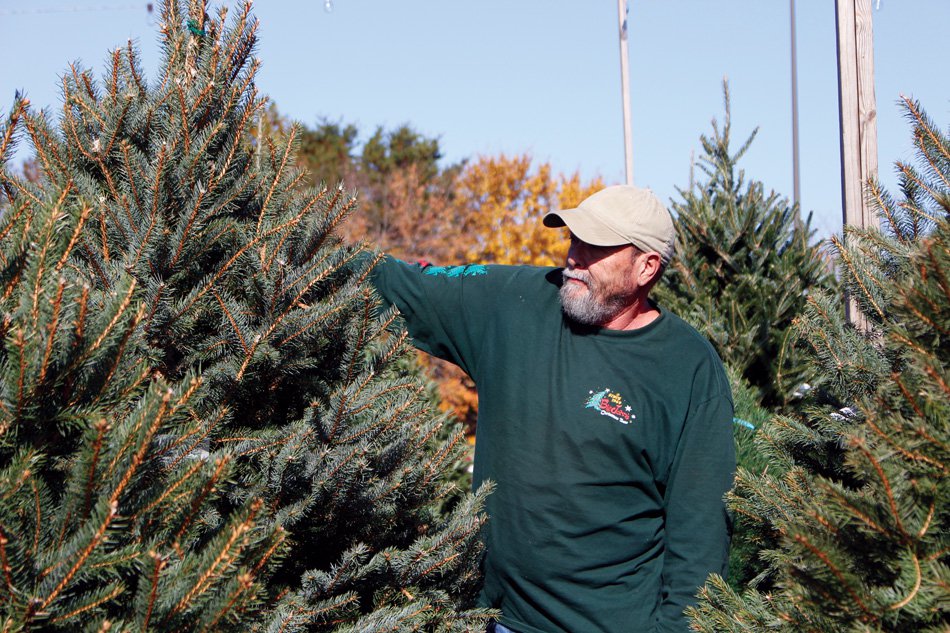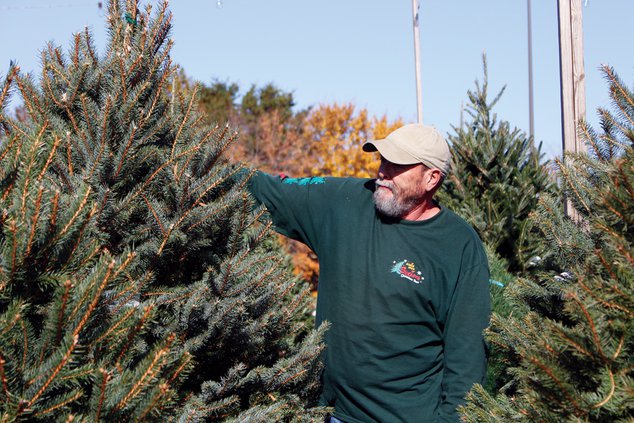Once the plates have been cleared later this week and family gatherings settle down, families across the county will engage in the early holiday season tradition of picking out and bringing home a Christmas tree.
From the fragrant Fraser Fir to the silver Blue Spruce, in the next weeks, thousands of trees will soon be making their way from farm, to car rooves, to homes all over Forsyth County.
If you are starting to wonder where your yearly tree is going to come from this year, the FCN has compiled a list of local tree farms and lots, as well as tips and tricks from experts on how to pick the right tree and keep it healthy this season.
Picking a Tree
According to the Christmas Tree Care guide from the Kinsey Family Farm, there are several important things to keep in mind when picking a quality tree from a lot or farm.
The guide states that by picking a tree with the right qualities, your tree can have a long lifespan.
They suggest picking either a cut-your-own-tree farm or pre-cut tree lot where trees are kept out of the wind, sun and have been in water at all times.
The guide states that a tree dropping brown needles is not necessarily indicative of an unhealthy tree. They say that the only way to be sure that your tree is healthy is to give it the “fresh test,” grabbing a branch about 6 inches from the end, squeezing and pulling the branch through your hand.
“If you end up with a handful of green needles the tree is beginning to dry out, and that’s not a very good sign,” the guide states. “Ideally you will come away with either no or relatively few green needles.”
The guide states that if a tree has started to dry out or has not been drinking water consistently, it’s possible that sap will have hardened in the base of the tree, leading to further dehydration.
When picking a tree from a cut-your-own farm, local farms suggest preparing to buy your tree by measuring the space it will live for the next month and visualizing just how big of a tree your home can handle.
“Trees out in the open sky look smaller than they actually will be, when you bring them inside your homes,” states the Kinsey Family Farm website. “It is deceiving … believe the heights listed on the tags.”
Caring for your tree at home
According to Division Chief Jason Shivers of the Forsyth County Fire Department, caring for a Christmas tree properly can mean the difference between your family’s safety and potential disaster this holiday season.
Shivers said that the fire department is well aware that this week will be when many people engage in the yearly tradition of going out after Thanksgiving and buying their family’s tree. More than a month separates Thanksgiving and Christmas, and according to Shivers in that time trees can grow dangerously dry.
Dry Christmas trees can burn from the bottom up, Shivers said, reducing whatever room it’s in into an inferno in seconds.
“So you've got to use some precautions and common sense when you put that tree out,” he said.
For live Christmas trees, the National Christmas Tree Association publishes a guide to caring for your tree once it’s home. According to their guide, taking care of your tree is all about using the right amount of water, placement in the home and using the right tree stand.
Their guide states that stands should provide 1 quart of water per inch of stem diameter. It also states that drilling a hole in the base of the trunk or adjusting the temperature of the water does not affect water uptake.
“Check the stand daily to make sure that the level of water does not go below the base of the tree,” the guide states.
Trees should be placed away from sources of heat like fireplaces, heat vents and direct sunlight, according to the guide, because they can increase the rate at which a tree dries.
The guide also states that a tree should fit in the stand without the trunk being removed or cut into a V shape.
“The outer layers of wood are the most efficient in taking up water and should not be removed,” according to the guide.
Where to get a tree
Bottoms Christmas Tree Farm
Where: 5880 John Burruss Road, Cumming
Hours: Monday through Friday: 3 p.m. until dark; Saturday: 9 a.m. until dark.
Contact: (770) 889-5235 or (706) 429-3173; bottomstreefarm.com
Price and size: Between 4 and 13 feet, $8 and $14 per-foot
Kinsey Family Farm
Where: 7170 Jot Em Down Road, Gainesville
Hours: Monday through Friday: noon to 7 p.m.; weekends: 9 a.m.to 6 p.m.
Contact: (770) 887-6028; kinseyfamilyfarm.com
Holly Hill Christmas Tree Farm
Where: 276 Woodland Lane, Dahlonega
Hours: Tuesday through Saturday: 10 a.m.-dark; Sunday: 1-5 p.m.
Contact: (706) 864-8222
Price range: $30 to $60 for cut your own cypress or pine trees
B.L. Mullinax Landscaping & Shrubbery
Where: 1886 Peachtree Parkway, Cumming
Hours: Monday through Saturday: 8 a.m.-8 p.m.; Sunday: 10 a.m.-7 p.m.
Contact: (770) 781-9823
Big Johns Christmas Trees
Where: 503 Lakeland Plaza Road, Cumming
Hours: Daily from 9 a.m. to 10 p.m.
Contact: 706-429-8614, bigjohnstrees.com
South Forsyth Baseball Christmas Trees
Where: 585 Peachtree Pkwy, Cumming
Hours: Starting Nov. 23 at 11 a.m. until trees are completely sold out.
Contact: southforsythbaseball.bigteams.com

